News Archive
Weekly Balloon News #8 - December 8th. 2022
Recent balloon launches and landings
A few hours after publishing the current edition of this bulletin, World View contacted me via Twitter about what I've published earlier on the development and ending of their last balloon mission launched from Spaceport Tucson a week ago.
On the right you can see the message published by the company clarifying what happened.
After reading the message, I proceeded to further analyze the data obtained from the ADS-B system. After doing some detailed calculations on the payload drop rate per second, I have to admit that I came to a conclusion that was wrong. After making a detailed comparison of every time frame of the data, the terminal impact velocity at landing was pretty standard. I've compiled the data in a PDF file available here.
To this I must add the wording of the text that did not make it very clear that I was theorizing about "what could have happened" but rather affirming "what had actually happened".
Hope this helps to put things in their proper place. Long live the data.
Our 12/2 flight was a test flight with a planned short duration of our zero-pressure ballon system. After reaching the target altitude and location it was terminated. Balloon and payload were successfully recovered without damage and all systems intact. It was a nominal flight.
— World View (@WorldViewSpace) December 8, 2022
Part of the conclusions expressed in the following paragraphs are wrong and have been properly rectified above. Wrong data is crossed out.
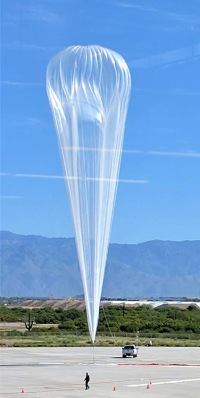
Just hours after the closing of the previous issue of this newsletter, World View launched a stratospheric balloon from Spaceport Tucson.
The balloon was sent aloft at 15:43 utc on December 2nd, 2022. After a nominal ascent in strong winds (60 knots average) the balloon reached float altitude about 100,000 ft at 17:14 utc but merely a minute later the altitude readings in the ADS-B tracking network showed that the balloon started to lose altitude at an average of 100 feet per second. Such a descent rate was indicative of a possible balloon burst. Although at first I thought that it was possible that the payload was undergoing a free fall, the reality is that the speed was very low: in other documented cases throughout the history of scientific balloons, the average time for a load to impact against Earth from the stratosphere in free fall is between 2 and 4 minutes. In this case, the payload/balloon reached ground at 100 feet per second 26 minutes later. The landing site was located in an isolated point 12 km E of Virden, New Mexico. Total flight time was one hour and 57 minutes.
Although the speed was very low for a free fall, it was abnormally high for a standard descent. This suggests two possible scenarios: the payload could not be separated from the collapsed balloon and it became entangled in the flight gear causing the rapid fall, or the descent of the payload took place with a semi-collapsed parachute without the necessary drag to lessen the fall. In either case, it is highly probable that the gondola suffered severe damage upon impact with the ground.
At this time no information is available about the status of the mission or payload damage. In the days following the incident, I have consulted with both World View and local authorities, but have received no response. Also, nothing has come out about the event in the media in either New Mexico or Arizona

In the early hours of the morning of December 7, 2022, hundreds or thousands of inhabitants of the populous city of Hyderabad, in the Indian state of Telangana, were shocked by the strange presence of a luminous object that was clearly silhouetted against the semi-cloudy sky of the city.
Images of the strange visitor began to appear on social media, triggering all sorts of rumors about aliens and UFOs. However, the explanation was much more "mundane" since shortly before dawn that same day a stratospheric balloon had been launched from the National Balloon Facility on the outskirts of the city.
Despite the fact that the explanation that soon reached the media served to quell the rumors, the commotion was just beginning.
Almost simultaneously, the inhabitants of the Vikarabad district some 70 kilometers to the southwest, also reported the presence of the balloon, with similar reactions. Although some media already warned of its true origin, some perhaps somewhat sensationalist chronicles spoke openly of "panic" when trying to describe people's reaction. However, the biggest surprise would be taken by the residents of a small village called Mogaligidda who, shortly before noon, witnessed the descent by parachute and the subsequent landing in a field on the outskirts, of a strange capsule as we can see in the images at right.
The fully enclosed capsule landed upside down still attached to the parachute that landed in an adjacent pasture along with a couple of white boxes attached. The scene was soon filled with onlookers who began filming with their cell phones and uploading the videos to different social networks, increasing the commotion. To many of those who commented on the videos, the artifact reminded by its shape of the time machine that appeared in the movie "Adytia 369" a very popular Indian science fiction film from the early 1990s.
Less than half an hour later, staff from the Tata Institute of Fundamental Research, the entity that operates and manages the National Balloon Facility, arrived at the landing site. First they proceeded to turn the capsule over and after opening a small hatch on one of its sides they began to disassemble it.
After completely separating one of its sides, they proceeded to extract from its interior a series of instruments that were located in a rack in the central part of the room. Later in the afternoon, some news reporters appeared on site and interviewed the personnel in charge of the recovery, who explained the origin and purpose of the artifact: the capsule belonged to HALO Space, a Spanish firm that plans to offer tourist flights into near space in a balloon starting in 2024. It had been launched from Hyderabad at 5:30 in the morning of that day as part of a test flight as reported in number 2 of this bulletin in October.
More details of the flight including a video of the launch and additional images, are available here.
Balloon image of the day
Since April 2021, I have published through my Twitter account (@stratoballoon) -at first daily and then more spaced out- a series of images from my archives that reflect important or curious moments in the history of scientific ballooning. Now, every week I will be including some of those posts in this newsletter. Those who want to see more similar content can do so by exploring the hashtag #BalloonImageOfTheDay
Extremely rare images of a balloon launch campaign at a small airfield in Vorkuta, Komi Republic, USSR, Early 80's.
— StratoCat (@stratoballoon) June 24, 2021
Scientists from Ioffe Physico-Technical Institute of Leningrad launched a Magnetic Spectrometer to detect Antiprotons of galactic origin.#BalloonImageOfTheDay pic.twitter.com/l7Sm0iCLEx
Scaled down model of the Atmospheric Reentry Demonstrator or ARD before a drop from a balloon off the coast of Sicily in 1996. The full probe would be launched from Kourou by an Ariane rocket in 1998 as part of the development of an European manned capsule.#BalloonImageOfTheDay pic.twitter.com/5iEQk1Btwd
— StratoCat (@stratoballoon) May 20, 2021
New contents in StratoCat
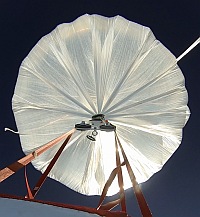
This week, I've updated flight reports for several balloon missions carried out in the framework of the Flight Opportunities program from NASA. The initiative, funded by NASA's Space Technology Mission Directorate (STMD) aims to facilitate rapid demonstration of promising technologies for space exploration and the expansion of commercial space applications through suborbital testing with industry flight providers. Three platforms are available: rocket-powered suborbital vehicles, parabolic aircraft, and of course high-altitude balloons. In this last category, the initiative counts with five flight providers: Angstrom Designs, Aerostar, Stratodynamics, World View and Near Space Corporation.
In this update I've completed the series of flights performed by Near Space Corporation, from their launch sites of Tillamook and Madras (both in Oregon) in 2013 and 2014.
| Launch base | Date | Experiment | Flight duration |
|---|---|---|---|
 Madras Muni. (OR) Madras Muni. (OR) | 2014/7/18 | ADS-B (Automatic Dependent Surveillance - Broadcast) | --- |
 Madras Muni. (OR) Madras Muni. (OR) | 2014/7/17 | PAMSS (Planetary Atmosphere Minor Species Sensor) | --- |
 Tillamook (OR) Tillamook (OR) | 2014/6/6 | GPHAR (Guided Parafoil High Altitude Research) | 52 m |
 Tillamook (OR) Tillamook (OR) | 2013/12/5 | ADS-B (Automatic Dependent Surveillance - Broadcast) | F 1 h 20 m |
 Tillamook (OR) Tillamook (OR) | 2013/9/26 | SATELLITE COMMUNICATION SYSTEM TEST | --- |
 Tillamook (OR) Tillamook (OR) | 2013/7/19 | HASS (High Altitude Shuttle System) | --- |
 Tillamook (OR) Tillamook (OR) | 2013/2/15 | ADS-B (Automatic Dependent Surveillance - Broadcast) | 3 h 32 m |
 Madras Muni. (OR) Madras Muni. (OR) | 2013/1/22 | ADS-B (Automatic Dependent Surveillance - Broadcast) | 1 h 30 m |
 Madras Muni. (OR) Madras Muni. (OR) | 2013/1/20 | STRUCTURAL HEALTH MONITORING SYSTEM | 3 h |
As usual, all the flight reports are full of technical details, pictures -when available- and external references on peer-reviewed papers, freely available thanks to Sci-Hub and the open access community.
See you in seven days.
Weekly Balloon News #7 - December 2nd. 2022
Recent balloon launches and landings
Another week goes by with no flights of relevance to report. As I said this week on Twitter, the presence of the Loon project that filled our skies with dozens of balloons every week is greatly missed, the likes of which have not been seen since the great USAF projects like Moby Dick in the 60's. On the bright side of the matter, this much "slower" reality is much more manageable for this humble one-man project.
As I reported last week, I finally decided to drop HBAL610 Aerostar Thunderhead from the list of possibly-maybe-God-knows-where-is-if-still-flying. Details of the brief flight -by current company standards- available here.
What's on in the field
This week, representatives of the balloon program of the French special agency CNES were in Brazil, signing a series of protocols of intentions with the authorities of the state of Tocantins, in the center of the country, with the objective to establish in the future a launch base for stratospheric balloons. The meetings were also attended by representatives of the Federal University of Tocantins (UFT) and the Brazilian Space Agency (AEB). During the visit, which lasted until November 30, several possible sites for the future base were surveyed.
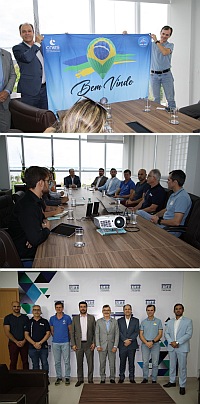
Stéphane Louvel, head of CNES balloon sector, said that "...Palmas -the capital of state- is a strategic place, because besides being in the center of the country, it is located just below the forest, with a large area both to the east and west available for controlled balloon flight...". But, in my opinion, the key factor is no doubt, that the city is located in the equatorial region, which is of great interest to scientists from around the world who seek to study climate processes in that particular area of the stratosphere. Brazil is practically one of the few countries in the world that has a sufficiently developed infrastructure that would allow studies to be carried out in these latitudes without risking expensive instruments to be lost in dense forest or in the Ocean.
Rodrigo Lonardi from AEB said that "...there is still a long way to go to make it permanent. First we would organize a launch campaign, most probably in the year 2025 or 2026, and from there maybe we can make it permanent at some point. Some other regions have already been studied and Palmas is in first place. There will be some necessary technical studies and negotiation with the authorities in Tocantins..."
Historically the CNES has had a close collaboration with the Brazilian aerospace agencies that have materialized in countless stratospheric balloon launch campaigns throughout the country. Most of them have been performed using the extensively developed airport infrastructure of the country, especially in the regional airports segment.
In that sense, there are several facilities in the region near Palmas, that could serve for the activities planned by CNES. Despite the fact that no specific names were disclosed after a brief survey I've made trying to make a good balance between air traffic, location and infrastructure, I have come to the conclusion that a great candidate to host the future base could be Porto Nacional Airport, located about 48 kms south of Palmas.
Another two sites are also in the table for now. The one proposed by AEB in Pau do Ferros, located closer to the Atlantic Ocean in Rio Grande do Norte state, and Balsas another site in consideration by CNES in the Maranhão state.
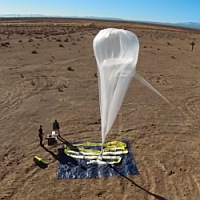
Since the early days of scientific ballooning we have seen all sorts of things being "dropped" from the stratosphere. From missiles, aerodynamic planes and models of space probes, to complex instruments for measuring atmospheric components or micro-gravity experiments. We have seen chicken sandwiches, chairs and lamps fly into nearby space, even a cell phone reproducing images from the stratosphere that we ourselves sent from our device on the ground. But, even in the 21st century, the world was not yet ready to see the fall from the stratosphere... of an egg. An egg I said?. Yes, an egg.
That seems to be the case for a recent balloon-based stunt performed by Mark Rober, former NASA engineer and co-founder of Crunch Labs a popular STEM-oriented website. Operations were performed by Night Crew Labs a California-based aerospace engineering firm which worked in the past with balloons for projects ranging from NOAA to Discovery Channel and Adam Savage of Myth Busters fame.
Did the egg survived the ride? ... well ... find out for yourself in this 26-minute video available on YouTube.
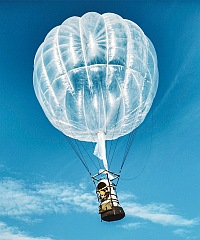
Iwatani Giken Co., a startup company from Hokkaido, Japan announced this week a series of succesfull test flights of their manned balloon system. The target altitude of the test on November 18 was 102.3 meters. The altitude seems not be so impressive, but the tests are part of the goal of the company to offer free manned balloon flights in the near future.
The manned series were preceded by unmanned flights for checking equipment. A total of three ascensions were made to altitudes ranging from 93 to 103 meters. As we can see in the images at right, both balloon and gondola have an unconventional shape for what we are used to seeing in this activity.
The company also announced that during the upcoming Tokyo Space Business Exhibition to be held on December 12-16 in the Tokyo-Japanese Bridge area will be unveiled the new design of a two seat luxury pressurized cabin aimed to offer near-space rides starting the next year.
Balloon image of the day
Since April 2021, I have published through my Twitter account (@stratoballoon) -at first daily and then more spaced out- a series of images from my archives that reflect important or curious moments in the history of scientific ballooning. Now, every week I will be including some of those posts in this newsletter. Those who want to see more similar content can do so by exploring the hashtag #BalloonImageOfTheDay
Launch of a balloon payload devoted to study thunderstorms outside an hangar at the Wallops Flight Facility. Circa 1994.
— StratoCat (@stratoballoon) September 10, 2022
The launch was one of many made at the location as part of a long lasting study carried out by the University of Washington.
#BalloonImageOfTheDay pic.twitter.com/tN29OAhufW
An average day on the life of a @CNES balloon recovery team.
— StratoCat (@stratoballoon) July 14, 2022
Pictured is the gondola housing the FOCA 1000 UV telescope (LAM Marseille / Observatorie Geneva) after landing without damage in a vineyard near P?zenas, France.
Credit: Alain Pauget#BalloonImageOfTheDay is back ! pic.twitter.com/EA1NJQ9MWQ
New contents in StratoCat
This week, I was focused in different areas.
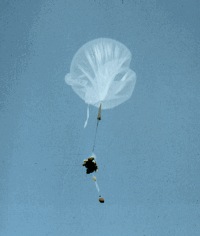
Something to which I was indebted for a long time is completing the flight reports of the most important manned balloon missions in history. This week it was the turn of the StratoLab project, more specifically the 1958 flight carried out by the Pilot Malcolm Ross (the soul of the project without a doubt) and the astronomer Alfred Mikesell.
In more recent events I also completed some of the missions carried out by World View with their Tycho 20 platform. As you may have guessed, the modular multi-purpose gondola aimed to provide researchers with stratospheric access to make new discoveries, was named after the Danish astronomer Tycho Brahe. Missions were performed from Roswell (NM) in 2014, Pinal Airpark (AZ) in 2015, and twice in 2019 over Arizona from Spaceport Tucson and St. Jhons.
Finally, I've also published two reports about missions performed by Near Space Corporation from its launch facility in Tillamook (OR): a free flight test of the ARES Mars Plane for NASA and a mission to evaluate a system to download data from animal tag sensors.
As usual, all the flight reports are full of technical details, pictures -when available- and external references on peer-reviewed papers, freely available thanks to Sci-Hub and the open access community.
See you in seven days.


